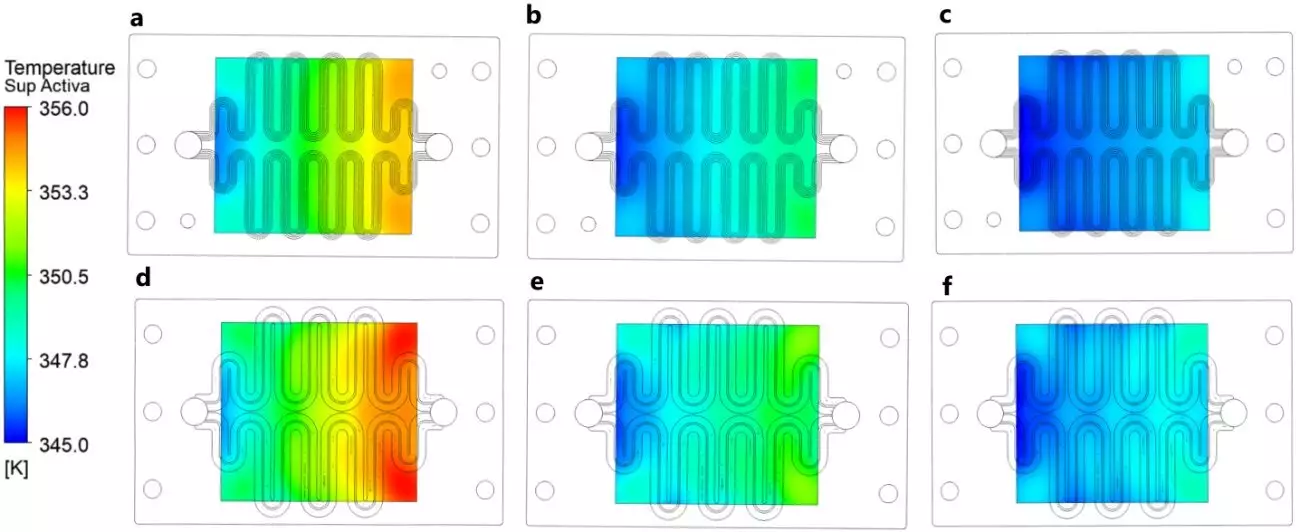The efficacy and longevity of Polymer Electrolyte Membrane (PEM) fuel cells significantly hinge on their thermal management systems. Recently, a dedicated research initiative involving the University of Seville’s Department of Energy Engineering, alongside the AICIA research platform and partners in China, has spotlighted the intricate relationship between cooling methodologies and membrane temperature gradients. This collaboration aims at optimizing cooling strategies essential for maintaining the integrity of PEM fuel cells under varying operational conditions.
Central to the team’s investigation was computational fluid dynamics (CFD) modeling, which meticulously examined the heat transfer characteristics in serpentine cooling channels—a popular design feature in PEM fuel cells. The study meticulously varied parameters such as coolant type, mass flow rates, thermal contact resistance, and bipolar plate materials. These factors directly influence the cooling performance, which, in turn, affects the overall efficiency of the fuel cell stack.
The researchers derived a novel correlation for the Nusselt number, a dimensionless coefficient that provides insight into convective heat transfer, tailored specifically for PEM fuel cell stacks. This correlation takes into account a broad spectrum of operational scenarios, enabling engineers and researchers to predict and enhance cooling performance more reliably.
The significance of efficient cooling in PEM fuel cells cannot be overstated. Poor thermal management can precipitate excessive temperature variations, potentially resulting in membrane degradation and loss of efficiency. This degradation not only diminishes performance but can also compromise the operational lifespan of the fuel cell system. The team’s findings affirm that key parameters like coolant mass flow and the thermal conductivity of the bipolar plate are paramount in determining the cooling efficacy of fuel cell stacks.
By systematically addressing these aspects, the research promotes the viability of longer-lasting and more robust PEM fuel cell systems, which are critical in the context of renewable energy technologies and sustainable power solutions.
The implications of these findings are manifold. First, the introduction of a new correlation for the Nusselt number enhances predictive capabilities regarding cooling system designs for PEM stacks. As these systems are increasingly integrated into vehicles and stationary energy systems, understanding thermal dynamics in greater depth will be vital for optimizing performance and reliability.
Furthermore, this research paves the way for further inquiries into innovative materials and designs that could further enhance cooling processes. By building on this groundwork, future studies could unveil even more efficient methods for heat management within fuel cells, aligning with global efforts towards cleaner energy solutions.
The collaborative research by the University of Seville and its partners marks a significant step forward in grasping the complexities of thermal dynamics in PEM fuel cells. The newly established correlations for heat transfer not only promise immediate improvements in design practices but also set the stage for future innovations in fuel cell technology. As the world moves towards greener alternatives, understanding and improving the cooling mechanisms of PEM fuel cells will be essential in achieving sustainable and efficient energy solutions.

